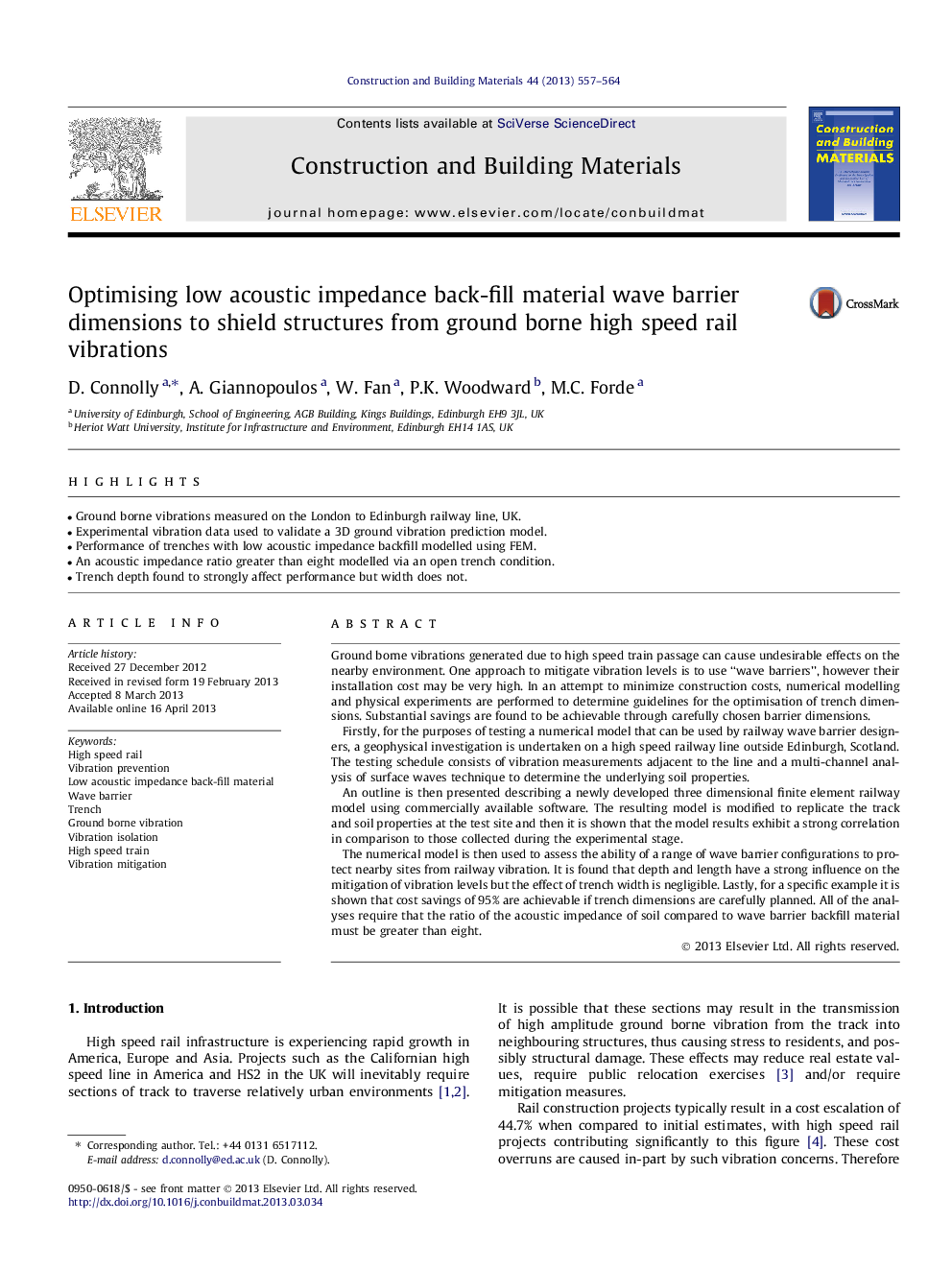| کد مقاله | کد نشریه | سال انتشار | مقاله انگلیسی | نسخه تمام متن |
|---|---|---|---|---|
| 258098 | 503611 | 2013 | 8 صفحه PDF | دانلود رایگان |

• Ground borne vibrations measured on the London to Edinburgh railway line, UK.
• Experimental vibration data used to validate a 3D ground vibration prediction model.
• Performance of trenches with low acoustic impedance backfill modelled using FEM.
• An acoustic impedance ratio greater than eight modelled via an open trench condition.
• Trench depth found to strongly affect performance but width does not.
Ground borne vibrations generated due to high speed train passage can cause undesirable effects on the nearby environment. One approach to mitigate vibration levels is to use “wave barriers”, however their installation cost may be very high. In an attempt to minimize construction costs, numerical modelling and physical experiments are performed to determine guidelines for the optimisation of trench dimensions. Substantial savings are found to be achievable through carefully chosen barrier dimensions.Firstly, for the purposes of testing a numerical model that can be used by railway wave barrier designers, a geophysical investigation is undertaken on a high speed railway line outside Edinburgh, Scotland. The testing schedule consists of vibration measurements adjacent to the line and a multi-channel analysis of surface waves technique to determine the underlying soil properties.An outline is then presented describing a newly developed three dimensional finite element railway model using commercially available software. The resulting model is modified to replicate the track and soil properties at the test site and then it is shown that the model results exhibit a strong correlation in comparison to those collected during the experimental stage.The numerical model is then used to assess the ability of a range of wave barrier configurations to protect nearby sites from railway vibration. It is found that depth and length have a strong influence on the mitigation of vibration levels but the effect of trench width is negligible. Lastly, for a specific example it is shown that cost savings of 95% are achievable if trench dimensions are carefully planned. All of the analyses require that the ratio of the acoustic impedance of soil compared to wave barrier backfill material must be greater than eight.
Journal: Construction and Building Materials - Volume 44, July 2013, Pages 557–564